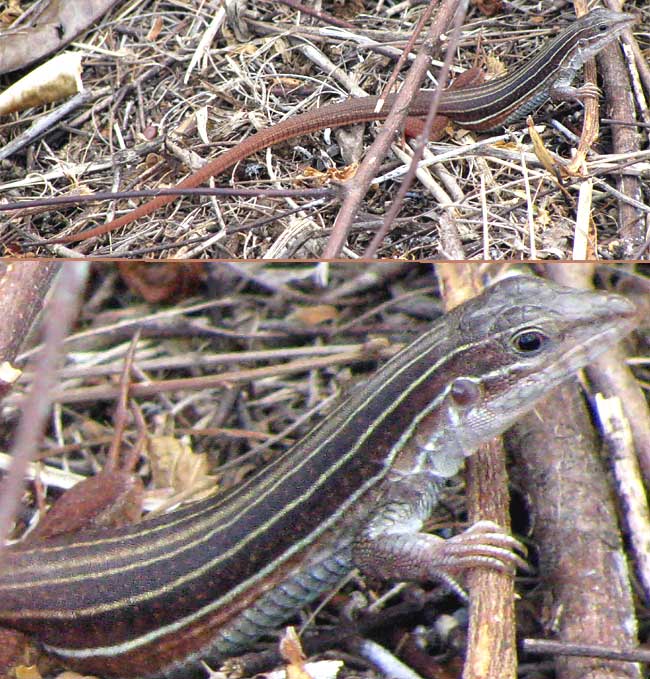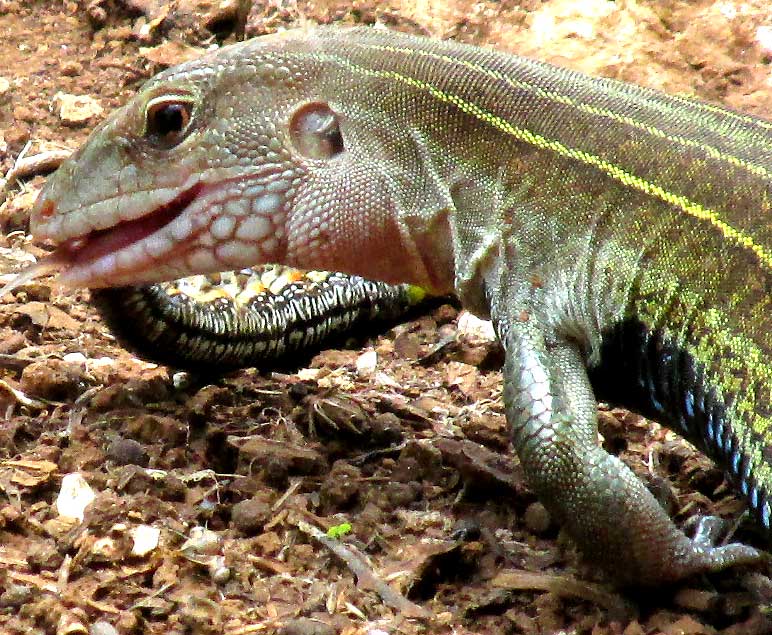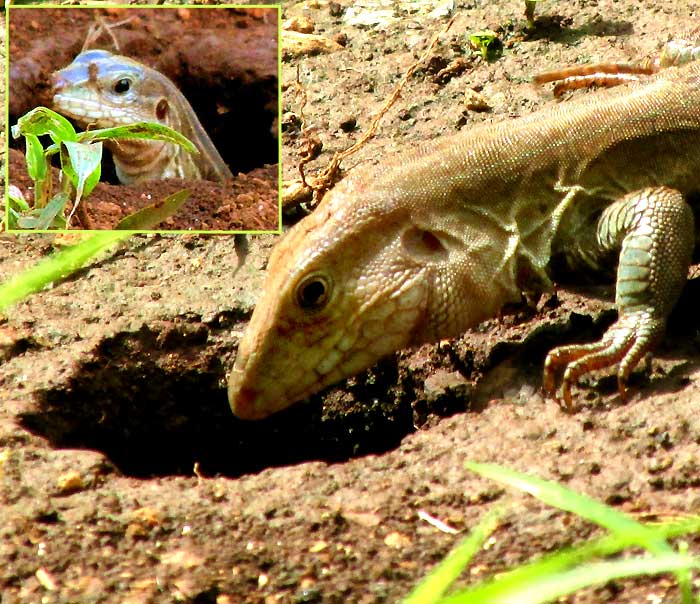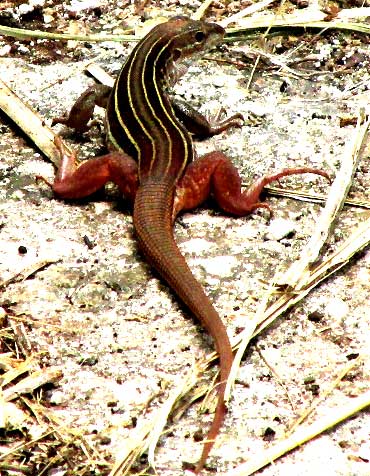Excerpts from Jim Conrad's
Naturalist Newsletter

from the April 11 2010 Newsletter issued from Hacienda Chichen Resort beside Chichén Itzá Ruins, central Yucatán, MÉXICO; limestone bedrock, elevation ~39m (~128ft), ~N18.52°, ~W95.15°
YUCATAN WHIPTAIL
During my banana-buying hike back from Pisté I heard rustling among dry leaves beside the road and was tickled to see a lizard about eight inches long (20 cm), with his narrow, longitudinal lines slightly resembling our racerunners and skinks up North, seen above.
Again in Campbell's book it was easily identifiable as the Yucatán Whiptail, CNEMIDOPHORUS ANGUSTICEPS. Yucatan Whiptails are endemic to the Yucatan Peninsula, northern Guatemala and east-central Belize, so this is a petty good find, even though the species is considered common in the northern Yucatán.
Yucatán Whiptails, I learn from Campbell, do some tricky things with their genes. It happens that sometimes female Yucatan Whiptails mate with a completely different species, the Deppe's Whiptail Cnemidophorus deppei. Offspring of these pairings produce populations that may or may not constitute yet a third species, depending on how you define "species." Whether the populations represent a third species or not, the individuals are "parthenogenetic." By parthenogenetic is meant that the populations consist of nothing but females who give birth to only females without the benefit of males. Offspring are genetic clones of their mothers.
Parthenogenesis is relatively common in invertebrates but rare among vertebrates. Most experts assume that parthenogenetic species have arisen fairly recently in evolutionary time, and won't last long now that they're here. One reason for that is that populations with very little genetic diversity can't evolve the usual ways to adapt to changing environments.
Sex exists for a reason, the geneticists say.
Entry issued on June 11, 2020, from the forest just west of Tepakán; elev. ~9m (~30 ft), N21.053°, W89.052°; north-central Yucatán state, MÉXICO
YUCATAN WHIPTAIL EATING CATERPILLAR
It's good to document identified species doing something specific, such as feeding on a caterpillar. Below is proof that Yucatan Whiptails eat caterpillars. This caterpillar, along with many others of its kind, overnight had defoliated a Melochia tomentosa bush, and now several were on the ground moving away from the bush:

Entry issued on June 25, 2020, from the forest just west of Tepakán; elev. ~9m (~30 ft), N21.053°, W89.052°; north-central Yucatán state, MÉXICO
A YUCATAN WHIPTAIL HOLE
After rain had softened the ground, in the very center of the footpath leading into the hut and about ten feet from the door, overnight a hole 1½ inches across (4cm) and fairly deep appeared, shown below:

Two Yucatan Whiptails daily patrol that area, one larger than the other, with males in this species being larger than females. Sometimes the big one enters the hole, stays a few minutes, and leaves. In the above picture's inset, dirt clings to the big one's head, so I wonder if he's been working on a nest. The hole is so deep that maybe the lizards only made the entrance to a pre-existing subterranean tunnel made by pocket-gophers, or Tuzas, the whole area being undermined with them. Often the smaller one, probably the female, passes the hole, looks into it while seeming to sniff, then moves on. We'll see how all this develops.
Entry issued on June 3, 2019, from the forest just west of Tepakán; elev. ~9m (~30 ft), N21.053°, W89.052°; north-central Yucatán state, MÉXICO
YUCATAN WHIPTAIL, REAR VIEW
At the ranch near Tepakán, Yucatan Whiptails have claimed the outside kitchen's concrete floor area, a pair of them usually to be found wandering across it or nearby, when the sun is shining. Below is a good shot emphasizing both the reddish rear end and the manner by which the lines along the side display.
